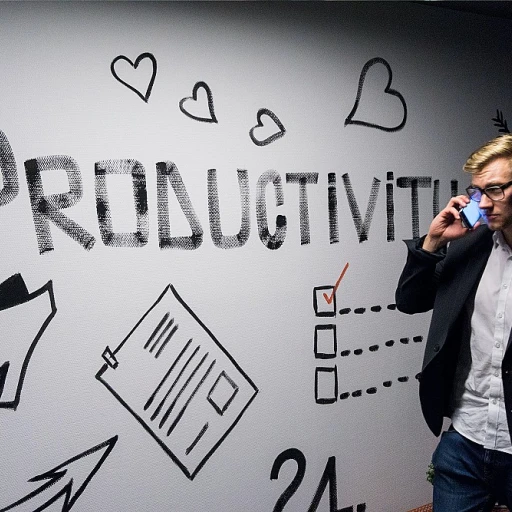
Understanding High Potential Employees
Recognizing High Potential Employees
High potential employees are critical assets to any organization, standing out not only for their outstanding performance but also for their ability to take on leadership roles in the future. Identifying these individuals involves observing specific traits and behaviors that set them apart from their peers.
One key indicator of high potential within an employee is their natural ability to lead a team effectively. These employees often exhibit strong leadership skills and a commitment to team development. They consistently demonstrate emotional intelligence, engaging in active listening and fostering positive relationships within the team. Their decision-making process showcases a deep understanding of the business's needs and goals.
Furthermore, these employees set clear and achievable goals for themselves. Applying the SMART goals framework (Specific, Measurable, Achievable, Relevant, Time-bound), they ensure that their objectives align with both personal growth and the company's long-term vision. Over a set period, such as three months, they continuously track progress, seeking constructive feedback to improve and refine their skills.
Moreover, high potential employees exhibit a growth mindset, embodying a strong desire to improve and better themselves and their work. They embrace challenges in leadership development as opportunities to learn, sharpening their time management capabilities and expanding their expertise.
Ultimately, supporting these individuals’ development requires creating a work environment conducive to growth. The key lies in fostering an atmosphere where continuous improvement is encouraged, allowing high potential employees to fully leverage training opportunities—such as unlocking their potential with targeted training programs.
The Importance of Tailored Leadership Development
Personalized Leadership Pathways
The journey of leadership development is not a one-size-fits-all approach. Understanding how leadership goals can be tailored for high potential employees plays a critical part in nurturing their growth. It's about crafting a personalized leadership pathway that aligns with the unique needs of each leader.
High potential employees require a development strategy that is both specific and adaptable, focusing on developing emotional intelligence, decision-making capabilities, and time management skills. These are pivotal for any individual transitioning into a leadership role.
- Specific Goals: Tailor leadership goals to be specific to the role and responsibilities of each individual. Clarity in direction helps boost motivation and performance.
- Measurable Outcomes: Incorporate measurable objectives that allow employees and companies to track progress effectively. This not only helps in keeping the focus sharp but also provides the necessary data to adjust strategies if needed.
- Achievable Targets: Set goals that challenge leaders but remain within their reach. Achievable targets prevent the risk of demotivation and encourage continuous progress.
- Relevant Objectives: Align goals to the team and company objectives. This ensures that the development of a leader contributes directly to broader organizational growth.
- Time-bound Goals: Introduce a timeline, such as three months, to instill urgency and regular assessment of the leadership development journey.
Development goals should echo the specific competency enhancements needed for high potential employees. These goals should encompass the broader spheres of leadership skills such as active listening, giving and receiving constructive feedback, and fostering a growth mindset, while being inherently integrated within the work environment to ensure both individual and team progress.
Effective leadership development considers the nuances of each leader's aspirations and limitations, fostering a supportive environment that encourages them to improve their abilities incrementally. This tailored approach in leadership development not only aids leaders themselves but also better positions the company to reach its ultimate goals.
Setting Clear and Achievable Leadership Goals
Goal Setting: A Path to Leadership Success
Setting clear and well-defined leadership goals is a cornerstone for effective leadership development. Tailored goals, which take into account both the organization's needs and the individual's capabilities, can provide a structured pathway for transforming high potential employees into capable leaders. In crafting these development goals, it’s pivotal to embrace the SMART criteria—Specific, Measurable, Achievable, Relevant, and Time-Bound—to ensure that objectives are not only visionary but also attainable within a designated time frame. By setting smart goals, employees gain clarity on what they need to accomplish and are better equipped to track their progress. This strategy not only benefits the individuals but also contributes to the company’s overarching work environment by fostering a culture of accountability and achievement.Practical Steps to Effective Goal Setting
- Specific Goals: Define precise activities that pinpoint what skills and areas need improvement. For instance, a leadership goal might involve improving emotional intelligence by actively engaging in team activities that require collaboration.
- Measurable Objectives: Include clear indicators of success. Whether it’s enhancing time management skills by decreasing project completion times by 20% in a three-month period or gaining proficiency in active listening through increasing positive feedback from team members, measurable benchmarks make it easier to evaluate progress.
- Achievable Aims: Ensure the goals set are realistic. Consider the employee’s current abilities and resources available within the company to ensure that goals leadership candidates pursue are within reach and not overwhelming.
- Relevant Goals: Align personal and company growth. Focus on leadership skills that will not only improve individual performance but also advance the company's strategic objectives and nurture productive, supportive relationships within the team.
- Time-Bound Targets: Set deadlines to maintain momentum. Establishing a clear timeline helps sustain focus and dedication, ensuring that the goal-setting process remains productive and encouraging timely development.
Overcoming Challenges in Leadership Development
Navigating Obstacles in Developing Leadership Skills
Leadership development can be a complex journey, often accompanied by a set of unique challenges. Understanding and overcoming these hurdles is essential for fostering leadership skills among high potential employees. Here’s a look at some common obstacles and how to navigate them effectively:
- Balancing Time Management and Development Goals: Time can be a significant constraint when developing leaders. High potential employees often juggle multiple responsibilities, making it challenging to find time for focused development. Leaders can use time management strategies and set SMART goals—specific, measurable, achievable, relevant, and time-bound—to maintain a balanced approach.
- Encouraging a Growth Mindset: Employees need a growth mindset to pursue leadership development. Emphasizing the importance of continuous learning helps team members understand that skills and capabilities can be improved over time.
- Handling Feedback Positively: Constructive feedback is vital in the development journey. Encourage leaders to seek and give feedback that is clear, specific, and actionable. This can foster a supportive work environment conducive to learning and improvement.
- Fostering Emotional Intelligence: Emotional intelligence plays a critical role in leadership. It’s essential to help aspiring leaders improve their ability to understand and manage emotions, both in themselves and their team.
- Building Strong Relationships: Strong interpersonal relationships are crucial for effective leadership. Leaders should focus on active listening and better decision making to strengthen bonds within the team and enhance collaboration.
Organizations seeking to cultivate high-potential leaders must remain committed to overcoming these challenges, thereby ensuring long-term growth and success. With a robust support system, employees are more likely to develop the necessary skills and reach their fullest potential.
Measuring Success in Leadership Development
Tracking Progress and Celebrating Milestones
Developing leadership skills in employees is essential for the growth and sustainability of any company. A key component in this process involves measuring the success of the leadership development journey. Establishing how goals are being met and recognizing achievements are crucial steps. Here are some effective strategies: -SMART Goals Framework: Leaders should implement SMART (Specific, Measurable, Achievable, Relevant, Time-bound) goals to better track and measure the progress of their leadership development initiatives. This approach helps ensure objectives are not only well-defined but realistic, providing clear targets for employees. -Metrics and Feedback: Use quantifiable metrics to assess the progress of leadership goals. For example, time management improvements can be measured by observing how tasks are completed within deadlines. Together with constructive feedback, these metrics help refine approaches and guide employees to improve their decision-making skills. -Regular Check-ins: Scheduled evaluations of how employees are progressing towards their goals should be conducted. This reinforces a support system, allowing employees to voice challenges and seek help if needed. -Celebrating Successes: Recognizing and celebrating milestones is indispensable. Doing so reinforces motivation, highlighting areas where team members have excelled in cultivating essential skills, such as emotional intelligence and active listening. Creating a supportive work environment involves paying attention to these success indicators and recognizing that each improvement leads to the development of high-caliber leaders. Employees thrive when their achievements are acknowledged, propelling them to continue their journey towards excellence in leadership roles. By keeping track of progress, leaders can ensure that their development goals are effective, measurable, and beneficial both to the company and the individual.Creating a Supportive Environment for Growth
Fostering a Growth-Oriented Work Environment
Creating a supportive environment for growth is crucial for nurturing high potential employees into effective leaders. A work environment that encourages development, feedback, and collaboration helps employees feel valued and motivated to achieve their leadership goals. Here are some strategies to consider:
- Promote a Growth Mindset: Encourage team members to embrace challenges and view failures as opportunities to improve. This mindset fosters resilience and adaptability, essential traits for future leaders.
- Encourage Active Listening: Leaders should practice active listening to understand the needs and aspirations of their team. This skill helps build stronger relationships and fosters a culture of open communication.
- Provide Constructive Feedback: Regular, constructive feedback helps employees track progress and identify areas for improvement. Feedback should be specific, measurable, and aligned with the employee's development goals.
- Support Time Management: Assist employees in managing their time effectively to balance their current roles and leadership development activities. Time management is a critical skill for leaders, enabling them to prioritize tasks and meet deadlines.
- Facilitate Skill Development: Offer opportunities for employees to enhance their leadership skills through workshops, training sessions, and mentoring programs. This investment in skill development demonstrates the company's commitment to their growth.
- Encourage SMART Goals: Guide employees in setting SMART (Specific, Measurable, Achievable, Relevant, Time-bound) goals. These goals provide clarity and direction, making it easier for employees to focus their efforts and measure success.
By implementing these strategies, companies can create a nurturing environment that not only supports the development of high potential employees but also enhances the overall work culture. This approach ultimately leads to a more engaged and effective leadership team, poised to drive the company forward.












